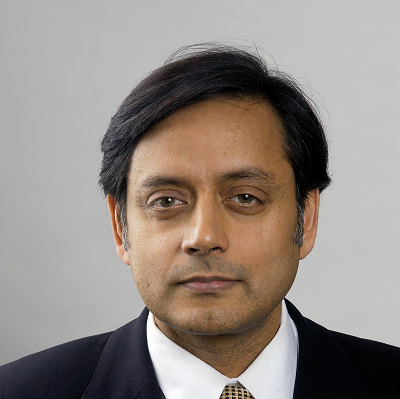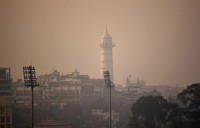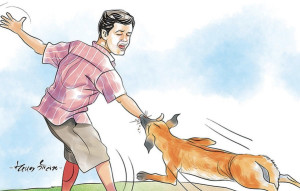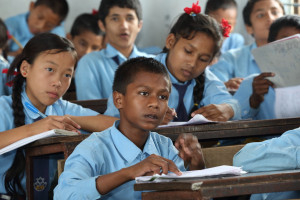Columns
India’s looming demographic divide
Instead of starting 2023 on a promising note, India is struggling with a worsening north-south divide.
Shashi Tharoor
India looks set to end a tumultuous year on a celebratory note, marking both 75 years of independence and the start of its G20 presidency. But another milestone is looming. United Nations experts estimate that on April 14, 2023, India will officially overtake China and become the world’s most populous country.
That is not necessarily a cause for celebration. China occupies approximately 9.6 million square kilometres (3.7 million square miles), compared to India’s 3.3 million square kilometres, which makes India’s population density nearly three times higher than China’s. Yet, unlike China, India struggles to feed, educate, and care for its 1.4 billion people, despite its impressive growth rate over the last three decades.
Population growth poses both opportunities and challenges. India’s population is expected to grow over the next four decades to approximately 1.7 billion before plunging to 1.1 billion by 2100. Owing to the declines in its mortality and fertility rates, India has a narrow window of opportunity to harness the growth of its productive labour force to boost economic development.
But uneven regional patterns, if not addressed, could turn India’s demographic dividend into a permanent demographic divide. While India’s northern states continue to grow, population growth in southern India has already stabilised; in some states, like Kerala in the south and Nagaland in the northeast, the population has already begun to shrink. This means that parts of India may experience baby booms while other regions grapple with ageing populations.
That said, the effects of climate change make it extremely difficult to predict India’s demographic trends. The country is experiencing extreme weather events—cyclones, heatwaves, droughts, and floods—with alarming frequency. Some rivers overflow while others run dry. Millions across the subcontinent already suffer from water scarcity, leading to mass displacement and migration from uninhabitable areas, exacerbating the regional divide.
The political implications of these trends could be far-reaching. India’s population grew from 350 million to more than a billion between 1947 and 1997, with the poorer, less educated, and largely Hindi-speaking northern states accounting for much of the increase, whereas southern states curbed population more effectively, owing to better human development and education policies. While northern families had 6-7 children on average for decades, the average for southern Indians dropped quickly to two children per household.
Given that India is a democracy, the more populous north should have had more parliamentary seats and, therefore, greater political power. But in 1976, anxious not to reward poor population control with increased political influence, Prime Minister Indira Gandhi froze parliamentary representation at the level of the 1971 census. The constitutional amendment that enabled the freeze was supposed to expire 25 years later, but Prime Minister Atal Bihari Vajpayee renewed it for another quarter-century.
As a result, some southern MPs represent fewer than 2 million voters, while some from the north represent as many as 2.9 million. Prime Minister Narendra Modi’s ruling Bharatiya Janata Party (BJP), which elicits overwhelming support from voters in the northern Hindi-speaking Cow Belt, appears set to end this anomaly and restore equal representation when the amendment lapses again in 2026.
While this scenario would make the Indian parliament more representative, it would also give the northern states a two-thirds majority, enabling the BJP to amend the constitution at will without regard to the wishes of the southern states. Modi’s cabinet would be able to pursue nationalist policies that the less populous states may find unpalatable or discriminatory, thus threatening India’s hard-won national unity.
Today, just two northern states, Bihar and Uttar Pradesh, account for the bulk of India’s population increase. With 220 million people, Uttar Pradesh would be the world’s fifth most populous country if it were independent. These states, which already have a disproportionate influence on Indian politics, will likely gain even more power as their populations grow over the next decade.
Ignorance about family planning and the benefits of smaller families in the less-literate north is likely the principal factor behind India’s uneven population growth. While the southern states have already transformed themselves, partly thanks to higher education levels among women, female literacy in the north is still far below the national average. Whereas Bihar’s population grew by 25.4 percent between 2001 and 2011, Kerala’s increased by just 4.9 percent. The 2021 census was postponed because of the Covid-19 pandemic, but the gap has likely grown over the past 11 years.
Meanwhile, India’s labour market has never fully recovered from the pandemic. According to the Centre for Monitoring Indian Economy, employment in India fell from 408.9 million in 2019-20 to 387.2 million in 2020-21 as the unemployment rate soared during the first year of the crisis. While employment has since recovered, there are 4.5 million fewer jobs than there were before the pandemic.
The sharp increase in youth unemployment is particularly worrying. The unemployment rate for Indians aged 19-25 rose to 23 percent nationally, reaching 40 percent in Kerala and Kashmir. Female participation in the labour force, which had previously been in line with global trends, has plunged in the last few years. At the other end of the spectrum, southern India has witnessed a proliferation of assisted-living facilities, as many ageing parents have no one to look after them after their children emigrate in search of better work opportunities.
Instead of starting 2023 on a promising note, India is struggling with a worsening north-south divide, uncontrolled urbanisation, water shortages and resource scarcities, an ageing population in some areas, and mounting youth unemployment in others. India’s impressive growth and economic development offer a reason for hope, and Indians have proved themselves to be resilient and resourceful in trying times. But to seize the opportunities offered by the looming demographic shift, India must acknowledge and address these trends. Otherwise, what looked like a dividend could fuel a disaster.
—Project Syndicate




 7.12°C Kathmandu
7.12°C Kathmandu













%20(1).jpg&w=300&height=200)

